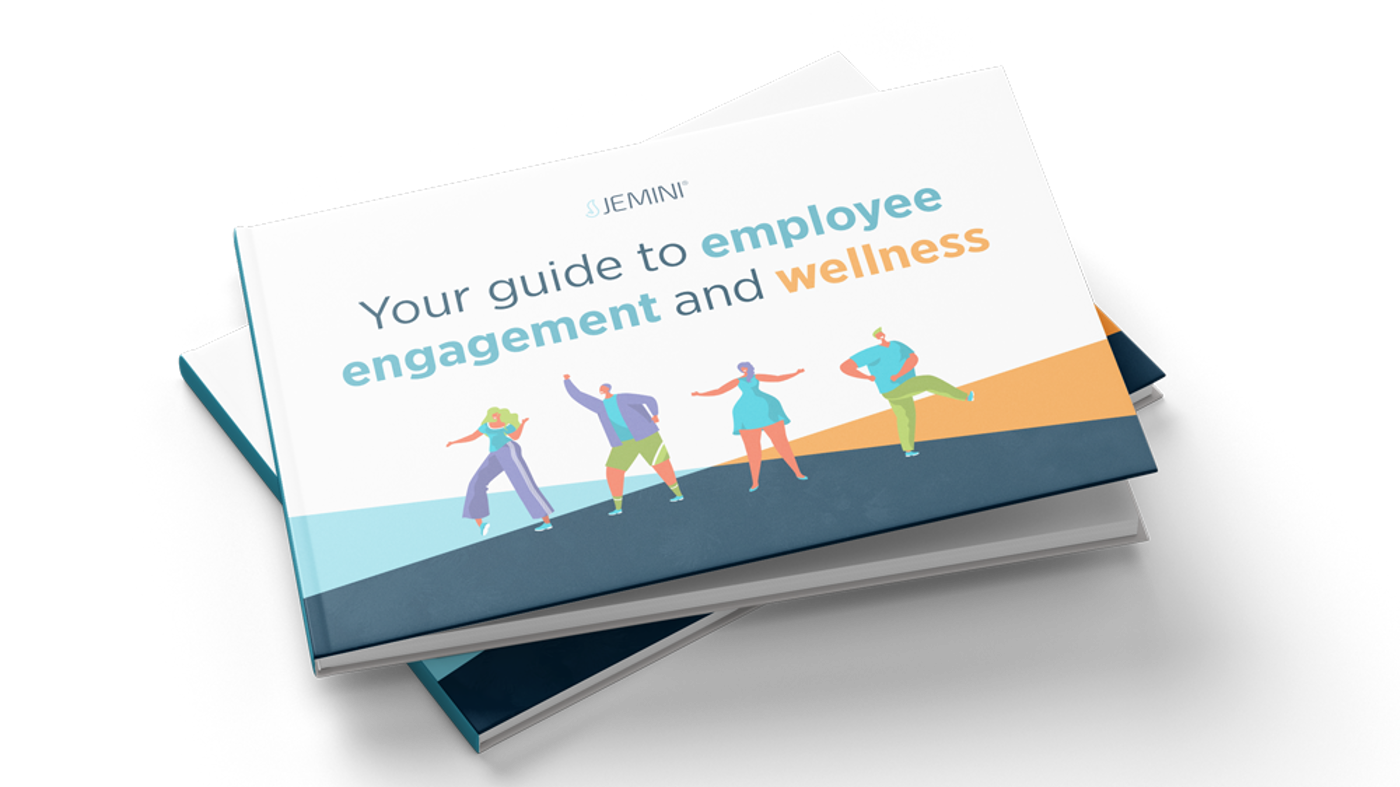Key signs include decreased productivity, lack of engagement, increased absenteeism, and withdrawal from colleagues.
Okay – when we talk about "flight risk" in your organisation, we don’t mean employees are about to hop on a plane to a tropical island with no extradition treaty (admit it, you’ve thought of it twice today). But they might be eyeing a different bus route – one that takes them straight to your competitor’s front door.
Look, the fact is, turnover is expensive. In Australia and New Zealand, the employee turnover rate hovers around 14-15%.
According to Gallup, replacing an employee can cost up to two times their annual salary. So, even if you only have 50 staff (at an average salary of $75,000), you could lose up to $1,200,000 if 8 employees leave within a year.
It’s truly staggering stuff that just doesn’t seem to be taken into account.
At the end of the day, losing valuable team members is more than dollars lost – it disrupts your operations, dampens team morale, and probably hands your competitors a nice little advantage. Even worse, every departure represents a loss of institutional knowledge and productivity. So yes, addressing flight risk crucial for maintaining a strong, cohesive team that can drive your business forward.
Let’s have a proper look at how you can identify employees who might be considering a change, and share strategies to keep them engaged and committed to your organisation.
61% of employees are a flight risk, with 38% open to the right opportunity and 23% actively looking for a new role right now.
Understanding employee flight risk: more than just itchy feet
If it wasn’t clear, when we talk about "flight risk" employees, we're talking about team members who are seriously considering packing up their desk plants and heading for greener pastures.

So, what makes an employee a flight risk? It's not always about money (though that definitely plays a part). Often, it's a perfect storm of factors:
- Career stagnation: High performers want to grow. If your star player feels like they're stuck in a rut, they might start looking for a new game to play.
- Work-life imbalance: If your team is constantly burning the midnight oil, don't be surprised if they start dreaming of 9-to-5 elsewhere.
- Lack of recognition: If your employees feel their hard work is going unnoticed, they might look for appreciation elsewhere.
- Poor management: As the saying goes, people don't leave bad jobs, they leave bad bosses.
- Misalignment with company values: If your company's actions don't match its stated values, employees might decide to find an employer who walks the talk.
The impact of these flight risks? It's not pretty.
Beyond the eye-watering replacement costs we talked about earlier, you're looking at a domino effect of lowered morale, decreased productivity, and a brain drain as your knowledge walks out the door.
But don't panic – recognising these factors is the first step in addressing them. In the next section, we'll dive into how you can actually spot these flight risks before they turn into flight plans.
Spotting the signs: your guide to employee flight risk detection
Alright, so you're not a mind reader, but there are some tell-tale signs that an employee might be eyeing the exit. Let's break it down:

Employee behavioural red flags
The vanishing act: If your once-punctual employee is suddenly racking up absent days or "working from home" more often, it might not be a newfound love for their couch.
The meeting ghost: Remember that enthusiastic team member who always had ideas to share? If they're now sitting silently in meetings, they might be saving their big ideas for future employers.
The bare minimum: When an overachiever starts doing just enough to get by, they might be saving their A-game for job interviews.
The social hermit: If a team member who used to be the life of the office party is now avoiding after-work drinks like the plague, they might be distancing themselves emotionally from the workplace.
Performance metrics to keep an eye on
- Productivity nosedive: A sudden drop in output or quality of work can be a red flag.
- Deadline? What deadline? If your usually awesome employee starts missing deadlines, it could be a sign that their heart is not in it anymore.
- No passion for learning: An employee who's stopped volunteering for new projects or training opportunities might be planning their exit strategy.
Leveraging HR analytics
Now, if you're thinking "This all sounds great, but I can't monitor every employee's behaviour 24/7", you're right – but that's where HR analytics comes in handy. With the right tools (hint: like Jemini), you can spot patterns that the human eye might miss:
Tenure trends: If employees in certain roles or departments consistently leave after a specific time period, you might have a systemic issue to address.
Engagement scores: Regular pulse surveys can give you a heads-up on departments or teams where engagement is dropping.
Promotion patterns: If your high performers haven't moved up in a while, they might be looking to climb the ladder elsewhere.
Manager absenteeism: High staff absenteeism rates under specific managers can be a red flag. If Team A is calling in sick more often than Team B, it might not be about the sniffles – it could show flight risk and underlying management issues.
The power of the check-in
Once you have the data, nothing beats good old-fashioned conversation. Regular one-on-ones and pulse interviews can give you huge insights into your employees' satisfaction levels. Ask the right questions, and you might just save a falling soldier.
Of course, identifying flight risks isn't about creating a workplace surveillance state. It's just about being tuned in to your team's needs and aspirations. In our next section, we'll explore what to do with this information – how to keep your valued team members from taking flight.
Strategies to keep your talent grounded
So, you've spotted the signs of a potential flight risk. Now what? Here are some strategies that can help stop your top talent from flying the coop.

Boost engagement
Employee Recognition: Tie acknowledgments to specific achievements and company values. Public praise can be powerful – just make sure it's genuine.
Employee Growth: Offer clear pathways for advancement, cross-training opportunities, and chances to lead projects. Show your team there's room to grow right where they are.
Company Culture: Foster a positive work environment where ideas are valued, and diversity is celebrated. A strong culture can be the glue that keeps your team together.
Show them the money
Salary: Forget good practice – performance and market rate reviews are crucial here. Don't wait for your star player to get an offer elsewhere before you realise they're underpaid.
Benefits: Benefits actually have to provide benefits. Consider professional development budgets, wellness programmes, or even salary sacrifice opportunities for long-term employees.
Flexibility: Offering flexible work arrangements can be a game-changer. Give employees some control over their work-life balance to inspire loyalty.
Invest in their future
Mentorship: Pair up-and-coming talent with seasoned pros. It's a win-win for learning and retention.
Skill-Building: Offer training programmes and support for more education. When employees feel you're actually invested in their growth, they're more likely to stick around.
Career Mapping: Work with employees to create clear, truly achievable career paths within your organisation.
Work-life balance (seriously)
Respect the Clock: Encourage your team to disconnect after hours. Aussie has it right – employees now have the right to ignore work emails and calls after work hours. A culture of constant availability is a one-way ticket to Burnout City.
Mental health matters: Offer actual, dedicated resources for mental health support and stress management.
Give back: Offering time off for employees to support causes they care about is massively underrated. It’s a great way to boost social wellness, give them a breather from the office, and show your company’s commitment to its community.
Communication is key
Open door, open mind: Foster an environment where employees feel comfortable sharing concerns or ideas.
Feedback loop: Regular, two-way feedback sessions keep everyone on the same page. Don't wait for the annual review to have important conversations.
Transparency: Be open about company goals, challenges, and successes. When employees feel in the loop, they're more likely to feel like part of the team.
Obviously, these aren't one-size-fits-all solutions. The key is just to listen to your team, understand their needs, and finesse your approach accordingly. Up next: putting it all into action with a Flight Risk Management Programme.
Putting it all together: your flight risk management game plan
Let’s bring it all together in a cohesive Flight Risk Management Programme. Here's your game plan:

Assemble your team: Create a cross-functional squad from HR, management, and key departments to oversee the programme.
Early warning system: Develop a data-driven system with Jemini to flag potential flight risks early.
Action stations: Establish clear protocols for when a flight risk is identified. Who does what, and when?
Manager boot camp: Train your managers to spot and address flight risks. They're your front-line defence.
Measure and Refine: Regularly evaluate your programme's effectiveness. What's working? What's not? Adjust accordingly, rinse and repeat.
Tech to the rescue: how Jemini can help
We’ve established that taking care of your people is the key to staff retention. But this is the real world, and even the most caring managers are only human. They've got deadlines, meetings to go to, and their own work-life balance to figure out. In the hustle of daily ops, it's easy to miss the subtle signs that an employee might be considering an exit.

That's where Jemini's all-in-one HR and payroll solution becomes your canary in the coal mine. Our software acts as an always-on, data-driven early warning system:
- Catch what human eyes might miss: Our analytics spot patterns in attendance, performance, and engagement that could signal flight risk, even when they're not obvious to the naked eye.
- Turn gut feelings into actionable insights:Transform those nagging "something's not quite right" feelings into concrete data points, helping you address issues before they escalate.
- See the full picture:Combine performance metrics, feedback data, and goal progress in one place to get a holistic view of employee satisfaction.
- Time for timely interventions: With early warnings, you can make things right before it's too late, addressing concerns when they're still minor hiccups rather than deal-breakers.
Jemini doesn't replace human intuition or the importance of genuine care – it just enhances it (a lot). By offering hard data and clear indicators, we empower you to take timely, targeted action to keep your top talent engaged and on board.
Let our software be your extra set of eyes, ensuring no potential flight risk goes unnoticed, even when you're juggling a million other tasks.
Where to next with Jemini
As you might have figured out, keeping your best people isn't just about free muffins on Friday. It's about understanding what's really going on in your company, noticing when someone's thinking of leaving before they do, and taking real steps to keep your team interested and committed. Handling all this effectively needs more than just gut instinct – it needs smart, data-driven tools.
That's where clever tech solutions make all the difference. Jemini's HR and payroll system doesn't leave you guessing about who might be looking elsewhere. Instead, it gives you solid information to spot potential leavers, improve your keep-people-happy plans, and create a workplace where people actually want to stay put.
Want to turn those maybe-leavers into your biggest fans? Don't wait until it’s too late. When it comes to keeping your star players on your side, the right tech isn't just useful – it's what sets you apart from the rest.
FAQs
Discover more
Share this page
Ready to transform your HR & Payroll process?





